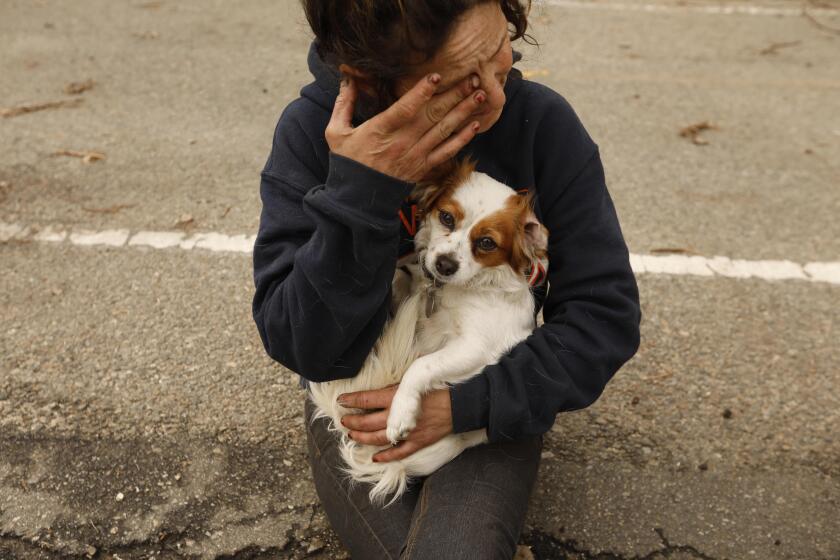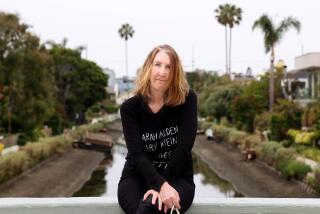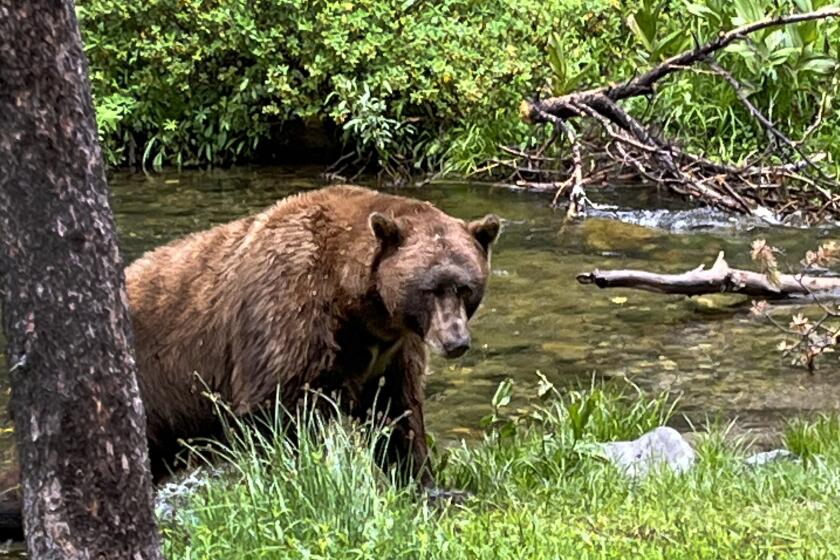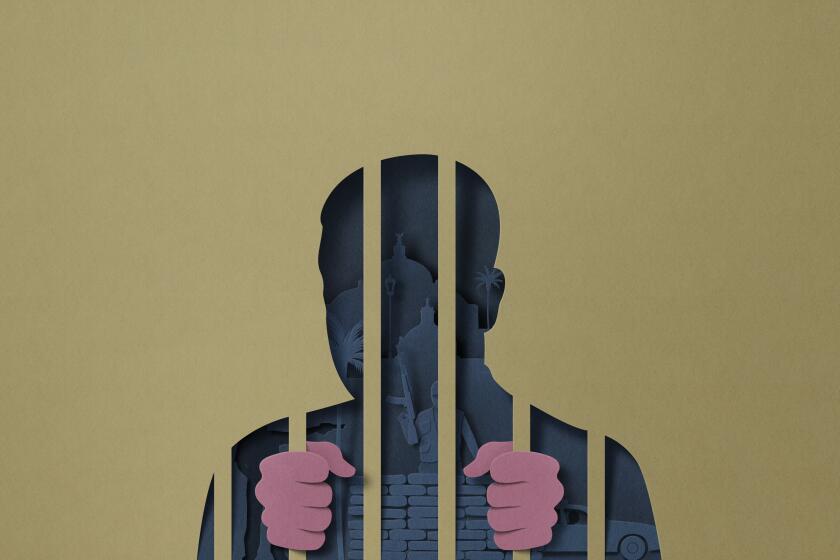We discovered different pieces of the same tragic story. Persistence and serendipity allowed us to finish it

Sometimes reporters find stories in the oddest places. The story of this double murder-suicide is no exception.
It began as so many do — while reporting another story. Los Angeles Times photographer Genaro Molina and I were finishing an article that ran at the end of last year about the unique and sometimes ingenious ways homeless people seek — and find — shelter.
We found people in treehouses and perched precariously along freeways. We also spotlighted a well-entrenched homeless community along the Los Angeles River, where some residents have lived for more than 20 years.
As we walked along a bike path that follows the river, we noticed some graffiti that read “RIP Geoff.”
This piqued our interest.
When we started asking questions, some of the river’s residents described a tryst gone wrong involving one of their friends: Geoff Garland. Molina did some research and found a small blog post in a local online outlet about his death and those of two others on Nov. 11, 2018.
Three people bound by addiction and mental illness were searching for a place to belong. Their journey ended in a double murder-suicide.
Garland had met a troubled couple — Eric Krause and Kandince Cuellar — who lived in Atwater Village and loved to ride their bikes along the river. The three of them started spending time together, which led to more time together and, eventually, a love triangle of sorts.
Then it all took a dark turn.
Early one morning, Krause left the bedroom in the small home where he lived with his girlfriend and returned with a shotgun. He shot Garland and Cuellar, before turning the gun on himself.
It was a crime that normally would’ve been chum for local television news. A paroxysm of death on a quiet residential block in an area that doesn’t have much crime and is well on its way through the gentrification looking-glass.
But these deaths had occurred days after the midterm election, a mass shooting in Thousand Oaks and the largest wildfire in modern Los Angeles County history. As a result, little had been written about the deaths of Garland, Krause and Cuellar.
But I knew there had to be a story there.
A few weeks later, I carved out some time and asked for the coroner’s reports. My stomach dropped when I heard from a Los Angeles County spokesman that another reporter had asked for the same documents.
Fortunately, that other reporter was my Times colleague Matt Ormseth. It turned out that we had been working on different parts of this sprawling tale of love, addiction and heartbreak.
He’d learned a lot about why Cuellar and Krause had ended up in the Atwater Village house, while I had discovered how Garland had come to live on the streets, met this couple and then become intimate with them.
Talking to different sources, we had teased out a tantalizing tip that we were struggling to run down: A woman named Marlene had been couch-surfing in the house with Cuellar and Krause, and had witnessed the atrocity.
The police told Matt as much, and some of the couple’s friends told me the same.
Tracking her down became a priority, but we didn’t have a last name. After some searching and a bit of luck, one of Cuellar’s friends connected us to her, and we rushed to an El Monte McDonald’s for an interview.
We waited and waited on that winter afternoon, but she didn’t show. Knowing she’d driven into town from Arizona, we searched parking lots of surrounding motels for the state’s license plate.
A one point, a motel manager kicked us off the premises after we had seen a car in the motel’s lot with Arizona plates and started knocking on random doors.
Dejected, we tried to come to terms with the possibility that we might not reach Marlene. We knew we still had a story — one that might help people understand how addiction and other larger societal factors make it challenging to reach some of the region’s most chronically homeless individuals.
So we started to write.
Still we found ourselves thinking about Marlene, and our editor, Reed Johnson, pushed us to make another attempt at getting an interview. As luck would have it, she responded to a Facebook message from Matt.
Days later, we were seated in a Montebello Astro Burger with someone who not only had been in the home that night, but had known one of the victims for years.
Marlene’s testimony was crucial and allowed us to compose a narrative with more depth and texture. She confirmed details that we had heard secondhand or had been told off the record.
She also described her own struggles — which echo the stories of many people living on Los Angeles’ streets. Sick and out of money, she had been couch-surfing, trying to make ends meet.
The offer to stay with Cuellar and Krause had been a lifeline, one that was snatched away from her when her friends were killed.
With Marlene’s account, our gifted colleague Maria La Ganga helped us complete the story, which we hope gives readers a better sense of the ongoing crisis taking place on our city streets.
More to Read
Sign up for Essential California
The most important California stories and recommendations in your inbox every morning.
You may occasionally receive promotional content from the Los Angeles Times.












